Why Does Your Cat Wag Her Tail While Purring? (Revealed)
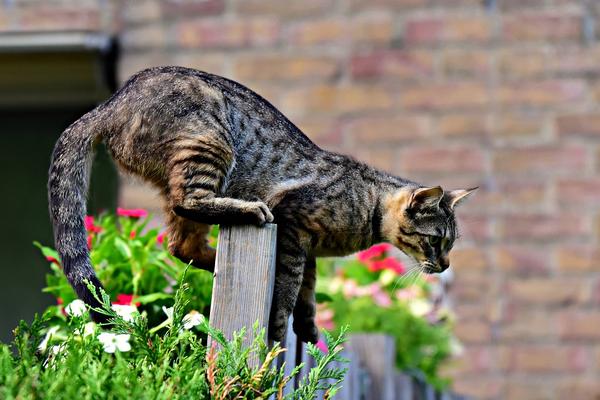
Worried sick that your feline friend's wagging tail while purring means something's terribly wrong?
Hold on to your catnip, because today we're diving into the mysterious world of feline behavior. 😺
Ever caught your fluffy companion in this peculiar act and wondered, "What's up with that?"
Well, my whisker-loving friend, you're not alone.
But fear not, for we're about to uncover the truth behind our furry friends' tail-twitching symphony.
So lace up your curiosity boots and let's embark on this enlightening journey together.
Let's find out, shall we?
Common Reasons Why Cats Wag Their Tails While Purring
Cat wag their tails while purring for a variety of reasons.
Let's explore some common ones:
- Excitement and anticipation: When cats are getting ready to play, hunt, or interact with toys, they may wag their tails in excitement.
- Expressing annoyance or anger: A swishing tail can be a sign that your cat is feeling irritated or upset about something.
- Feeling happy: Cats may wag their tails as a display of happiness and contentment. It's their way of saying "I'm pleased!"
- Hunger: If your cat is purring and wagging their tail near mealtime, it could be their way of letting you know they're hungry.
- Dreaming and self-soothing: Sometimes, cats' tails twitch while they're dreaming or trying to soothe themselves. It's like their version of counting sheep!
- Responding to sounds: Cats' tails can also move involuntarily while they're sleeping if they hear a noise. It's their instinctive reaction to the world around them.
You need to note that tail wagging alone doesn't always indicate a specific emotion or intention. It's best to observe your cat's overall body language and behavior to understand their mood better.
Remember, each cat is unique and may have their own tail wagging preferences.
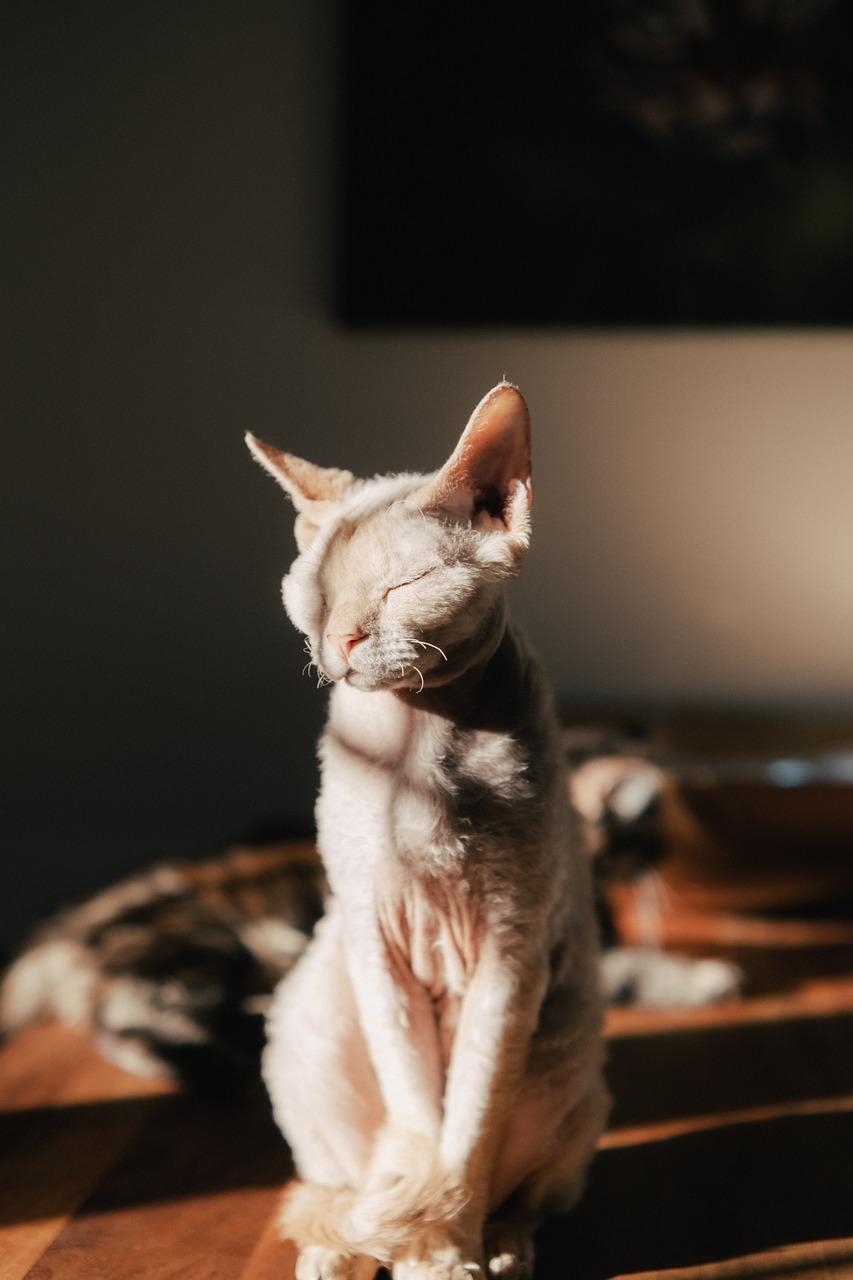
Pay attention to what your cat is telling you through their tail movements, and you'll deepen your understanding of their feline communication style. 😺
And it gets even more fascinating...
Understanding cat tail movements not only helps interpret their emotions but also provides valuable insight into their behaviors and intentions.
Curious to learn more about the different tail movements and what they signify?
Let's dive deeper into the intricate language of feline communication:
How to Interpret Your Cat's Tail Movements
Decoding a cat's tail language can be tricky, but if you pay close attention, you'll get a better grasp of their emotions.

Here's what you need to know:
- Wagging at different speeds and directions means different things. It's like their own little Morse code.
- A quivering tail is a clear sign of excitement. They're bursting with joy!
- When the tail fluffs up, it's best to give them some space- they're feeling danger or aggression.
- Don't fret if you see your cat's tail flicking from side to side; that means pure playfulness and happiness.
- On the flip side, if your feline friend swishes their tail slowly from left to right, they might be irritated.
- If their tail twitches while they're snoozing, it means they feel incredibly safe and secure in your presence.
- Speeding up their tail swishing? That's a sign of annoyance and unhappiness.
- Beware of a rapidly wagging tail back and forth—that signals frustration. Uh-oh!
- A focused tail wag suggests they're intensely focused on something intriguing. You've got their full attention.
- Lastly, a wiggling tail indicates high excitement—something thrilling is about to go down!
By paying attention to their tail movements and all in all body language, you'll master the art of understanding your cat's unique way of expressing themselves.
And now, let's delve deeper into understanding your cat's body language, as it is crucial in decoding their emotions and intentions.
I'll guide you through the different tail movements and what they signify!
Understanding the Body Language of Cats
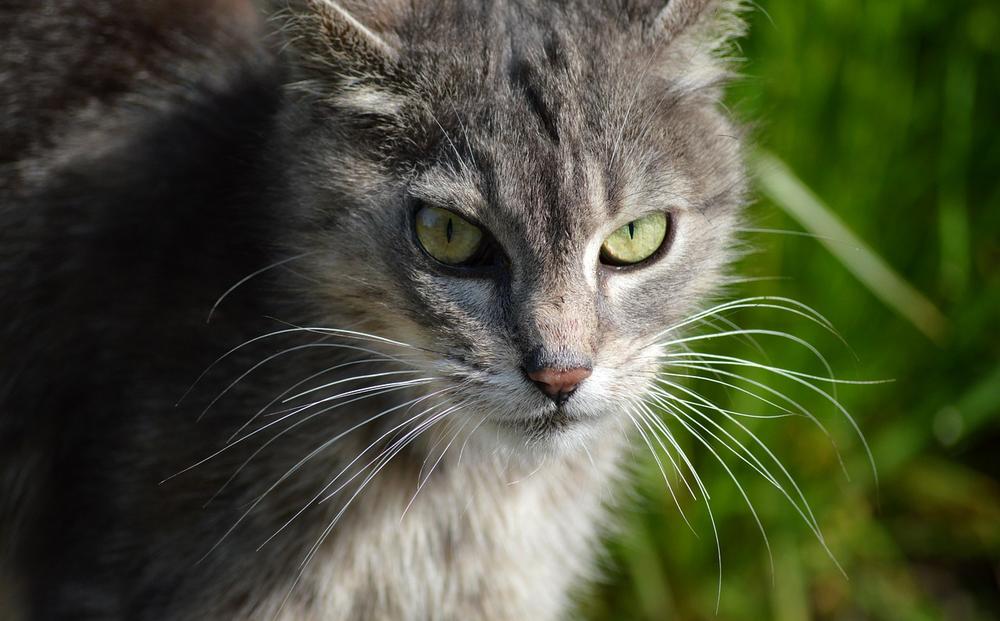
To better get a read on cats' body language, here's ten key signals you should keep in mind:
- Keep an eye out for tail positions that might vary.
- When a cat holds its tail high and gives it a slight wag, that means it's feeling playful.
- If you see its back arched and ears pushed back, take note - it could be feeling fearful or aggressive.
- When a cat seems scared, just give it some space to calm down and chill out.
- While your cat purrs away, make sure to pay attention to how its tail wags.
- A sleepy cat flicking its tail is a clear sign that it feels safe and secure.
- Some cats like to wrap their tails around their owners as a way of showing affection.
- So, when your cat interacts with other animals, carefully observe how it uses its tail.
- Don't ignore signs of discomfort, like a puffed-up tail or one tucked between the legs.
- All in all, understanding tail language reveals a lot about what goes on inside a cat's head.
The more you grasp your cat's body language, the stronger your bond will grow, and the smoother your relationship will become.
The Importance of Observing Other Signs of Feline Communication
Keep an eye out for these things when you're trying to understand what your cat is telling you:
- Look at their eyes - big or small pupils can mean different things, like being scared or mad.
- Notice if their ears are pointing up or flat against their head - up ears mean they're curious or interested, but flat ears mean they're afraid or angry.
- Watch how they're standing - a relaxed and open stance means they're happy, but if they're all tense and hunched over, it means they're stressed or anxious.
- Pay attention to the way their tail moves - if it's flicking or lashing around, it probably means they're annoyed or bothered.
- Put all these signs together and think about the situation - for example, if your cat hisses with big pupils and flat ears, it's likely that they're feeling scared or aggressive.
Gain understanding of your cat's emotions and desires by observing these minor details. 🐱
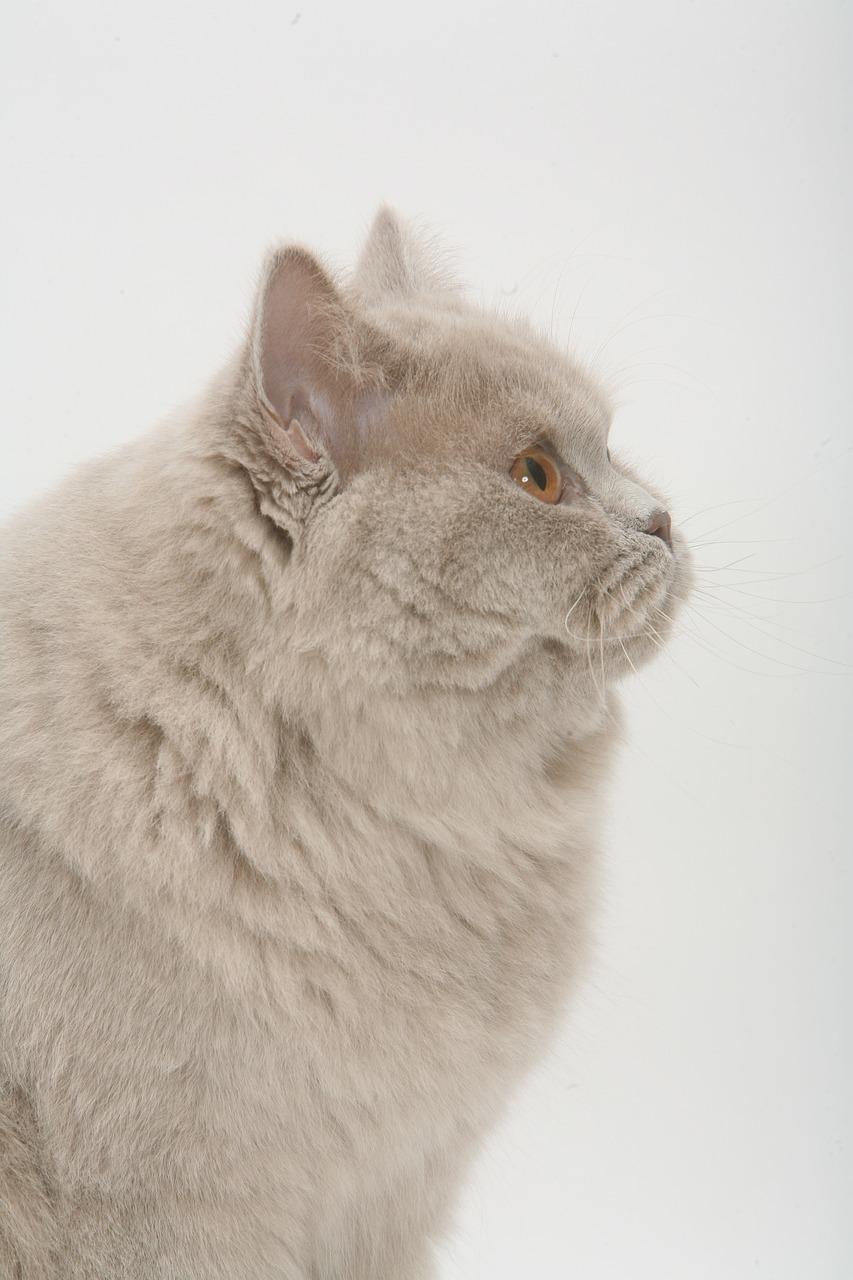
Cats use their whole body to communicate, so you have to look at everything to truly connect with your furry friends.
The Relationship Between Purring and Tail Wagging
Cats bless us with their presence and purr, indicating they feel secure in our care. A gentle wag of the tail adds to this enchanting display.
This soothing sound is more than just feline music; it's a form of communication that helps strengthen their muscles.
Purring is like a secret language between cat and human, expressing delight at being petted and loved. As they purr away happily, muscles throughout their body, even those in their dainty feet and elegant tails, may twitch, working hard to keep them agile and healthy.
Cats truly are mysterious creatures, weaving magical moments into our lives.
Is Tail Wagging While Purring a Sign of Contentment or Aggression?
| Tail Wagging While Purring | Explanation |
|---|---|
| Indicates Contentment | When a cat wags her tail gently while purring, it generally indicates that she is content and relaxed. This behavior often occurs when she is receiving attention, being petted, or enjoying a relaxing environment. Tail wagging in this context can be seen as a sign of happiness and satisfaction. |
| Can Signal Playfulness | In some cases, tail wagging while purring can also indicate playfulness. If your cat is engaging in playful behavior, such as chasing a toy or interacting with you in a lively manner, the wagging tail may suggest her excitement and enjoyment of the activity. It is important to observe the overall body language and other cues to determine if the tail wagging is associated with playfulness. |
| May Reflect Overstimulation | Sometimes, a cat may wag her tail while purring as a reaction to being overstimulated. This can occur when she has been petted or touched for an extended period and becomes overly sensitive or irritated. If you notice that the tail wagging intensifies or becomes rapid, along with other signs of discomfort such as flattened ears or body tension, it is advisable to give your cat some space and not continue with the interaction. |
| Can Signal Aggression or Annoyance | While tail wagging during purring is often a positive expression, it is crucial to consider the cat's overall body language and context. If the tail movements become rapid, accompanied by pinned ears, a tense body posture, or growling, it can indicate aggression, annoyance, or distress. In such cases, it is best to give your cat space and avoid further interaction until she calms down. |
| Individual Variations | It's essential to note that cats can have unique personalities and behaviors. Some cats may simply have a habit of wagging their tails while purring, which may not necessarily indicate any specific emotion. Understanding your cat's individual tendencies and observing additional body language cues will help you better interpret her feelings in various situations. |
Cats are enchanting creatures, right?
Watching them purr and wag their tails can be pretty interesting.
But you're probably curious about what it means when your cat wags her tail while purring. Is it a sign that she's happy or angry?
Let's dive in and find out.
First things first, tail wagging in cats doesn't always mean they're content.
If your cat wags her tail forcefully while her ears are pinned back, body tense, and growling, it usually indicates anger, annoyance, or distress.
So if you see these signs, be cautious and give your cat some space.
Now let's focus on purring with a wagging tail.
In general, purring is how cats express themselves and it can have different meanings.
When your cat purrs and gently moves her tail from side to side, it often shows that she feels safe and comfortable with you (meaning she likes being around you!).
Tail wagging during purring usually means your cat is enjoying your attention and petting.
It's her way of saying, Hey, I like this, keep it up!
However, pay attention to how she wags her tail.
If it becomes fast or forceful, it could mean she's starting to feel uneasy or bothered by something (take note of this!).
Sometimes, a fully wagging tail might indicate that your cat is getting ready to pounce on something, whether it's prey or another cat (preparation mode activated!).
Again, consider other behaviors like pinned ears, tense body, or growling, as they can signal anger, annoyance, or distress.
The bottom line is, tail wagging while purring varies from cat to cat and depends on the situation.
So, closely observe your furry friend's body language and in essence behavior to better understand what she's trying to tell you (your cat has her own unique signals!).
Understanding your cat's tail wagging and purring behavior can strengthen your bond with her.
Each cat is an individual, so take the time to observe and learn what brings true contentment to your cat.
In conclusion, understanding your cat's tail wagging and purring behavior can strengthen your bond with her.
If you want to delve deeper into the reasons behind why a cat purrs and bites, I highly recommend checking out my informative blog post, titled Why Does My Cat Purr and Bite Me.
In this article, you will find possible explanations and solutions for this behavior.
When to Be Concerned About Tail Wagging While Purring
Wagging tail and purring can be a confusing combination when it comes to cats.
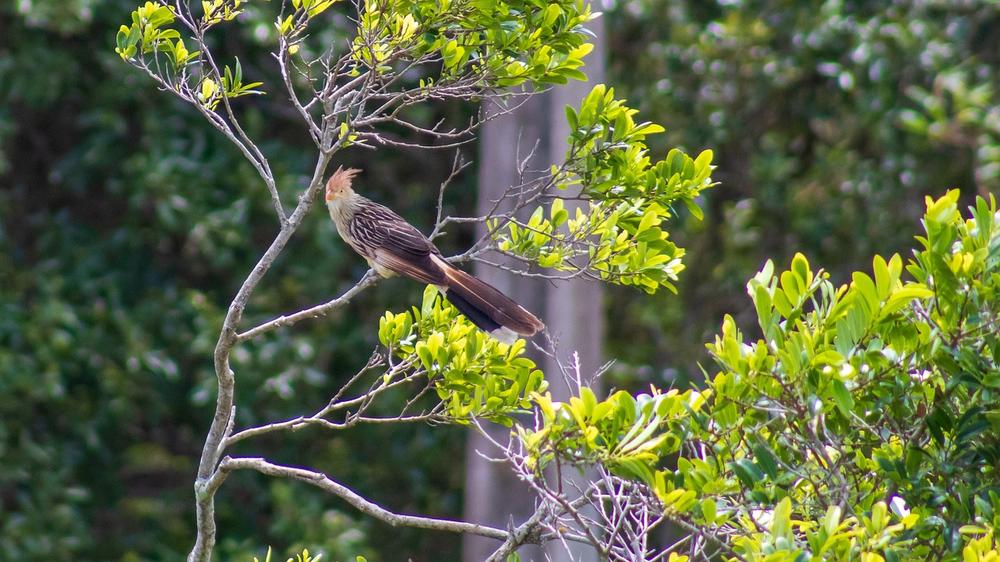
You should pay attention to the tail wag as it can indicate different emotions or responses.
Here are some situations where tail wagging while purring should raise concern:
- Low-level cautious tail wag: This could mean fear or anxiety, so try to identify any triggers in their environment and address them accordingly.
- Shaky tail wag: It might mean excitement or happiness, but it could also signal an intention to mark territory with urine spraying.
- Back-and-forth tail wag with bursts of energy: This could suggest annoyance, possibly due to invasion of their territory or a desire for solitude.
- Rapid swishing of the tail without playfulness: It might indicate that the cat is perturbed and requires some alone time.
- Unusual behavior or changes: If your cat's wagging tail and purring seems out of character, it's best to contact a veterinarian for guidance.
Tail wagging and purring can convey complex emotions, so understanding your cat's body language is key to cat-parenting success!
The Final Takeaway: Understanding Feline Communication
Key Takeaways:
- Cats wag their tails while purring for various reasons, including indicating different emotions like happiness, frustration, and anger.
- Tail movements can help interpret a cat's emotions and communication.
- Understanding cat tail movements is crucial for understanding a cat's communication and behavior.
- Cats use their tails to express moods such as happiness, anger, and fear.
- Tail behavior is an important form of body language in cat communication.
- Purring is a way for cats to communicate and exercise their muscles.
- Tail wagging while purring usually means the cat feels secure and enjoys the attention.
- Purring can have multiple meanings, including contentment and insecurity.
- Tail wagging and purring can also occur when a cat is anxious, stressed, or in pain.
- Pay attention to your cat's tail behavior and seek professional help if necessary.
And that wraps up today's article.
If you wish to read more of my useful articles, I recommend you check out some of these: Why Does My Cat Purr Constantly, Why Does My Cat Lay on Me and Purr, Cats Purr While Eating, Is Purring Involuntary in Cats, and Do Kittens Bite When Teething
Talk soon,
-Sarah Davis